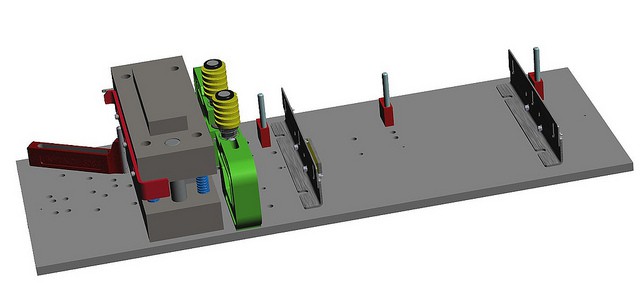Measures To Take When Working with Tube Hole Punching Machine
Punching in sheet metal processing refers to a slitting procedure when a sheet is completely cut through in one motion. Round holes are produced in the sheet, for instance, by single strokes that can happen in a very short period of time. Punching machines can also be used to produce outside outlines.
Punching
Making a hole in a tube with a die supported by a mandrel is known as tube punching. Tube "punching" is the act of using a punch to create a hole without the use of a die or die support. The result is a dimpled hole.
Geometrically speaking, punched-shaped circular holes are always flawless. A punching machine operates similarly to a paper hole punch. The hole support and circular opening are both pressed into the paper by the punch. In doing so, a circle is formed. The punch container is filled with the offcuts that were punched out.
The
same principle applies when punching metal: place the sheet between the punch
and the die. Punch descends and slants into die. The sheet is cut as the edges
of the punch and die move parallel past one another. Punching falls under the
shear-cutting process group for this reason.
What are Tube Hole Punching
Machines?
The multi-cylinder tube hole punching machine is powered by an electrical motor, hydraulic pressure, and manually fed steel pipes by workers. It may be used as an industrial hole punch and can pierce holes in a variety of shapes in steel, stainless steel, iron, and aluminum alloy tubes.
This punching equipment is tailored to meet the needs of various metal punching applications and consists of hydraulic cylinders with various punch and die sets merged into one.
The
material is sheared between the punch and die to create the hole. The material
gets moved around throughout the punching process and then totally loosens due
to material failure. This results in the normal cut surface seen in punching
operations, i.e., a smooth surface where the material has slipped and a rougher
surface where the failure occurs, on both the punched detail and bore.
Measures to Take When Using Tube
Hole Punching Machines
Angle iron, aluminum profiles, and different steel pipes can all be processed using hydraulic punching machines. By switching die sets, it can punch holes, notch arc shapes, and cut.
The following considerations should be made when utilizing tube punching machines:
1. Punctuation of holes without tube insertion is strictly prohibited. The inner die's location cannot be fixed in the absence of a tube. As the puncher descends, it may crush the inner die, harming the sets of dies.
2. If punching is extremely laborious, see if the puncher's edge has been passivated. If so, take the puncher out and sharpen it, or buy a new one.
3. A worn puncher may shorten the stroke. Please lower the stroke sensor switch if the puncher stops before the materials are punched through.
4. The hydraulic oil's temperature needs to be maintained between 30 and 60 °C. When it's cold outside, the hydraulic punching machine needs to be on for a while before use. Please frequently check to see if the oil temperature is overheated when operating continuously for an extended period of time.
5. Please replenish the hydraulic oil
and inspect the hydraulic cylinder and oil pump once the equipment has operated
for 10,000 hours or 4 years, whichever comes first.
Conclusion
When
utilizing tube hole punching machines,
the operator must adhere to the recommended procedures. The puncher and die
sets may be harmed by improper operation and maintenance, which will also
reduce the life of the tube punching machine.
.jpg)


.jpg)
Comments
Post a Comment